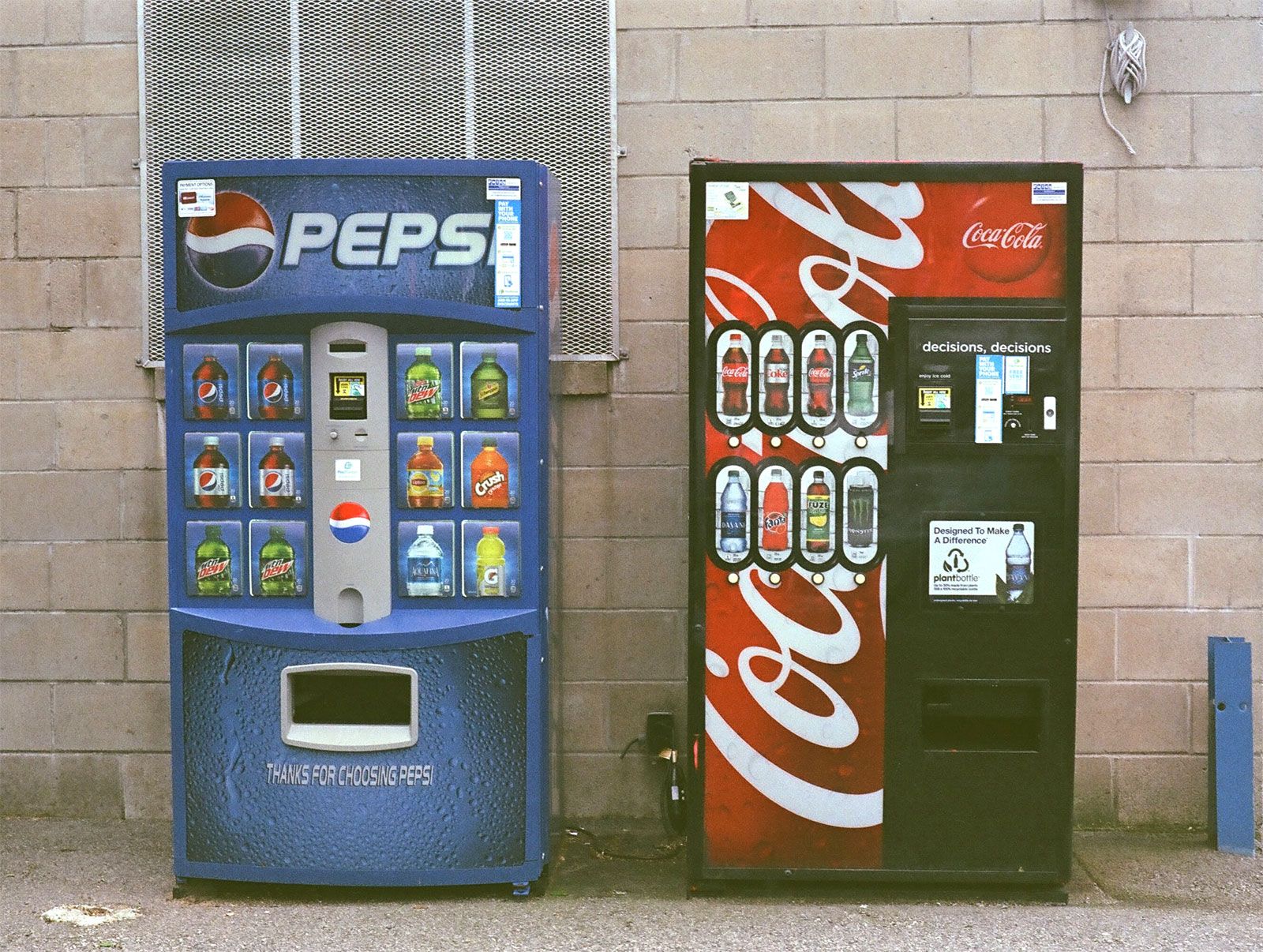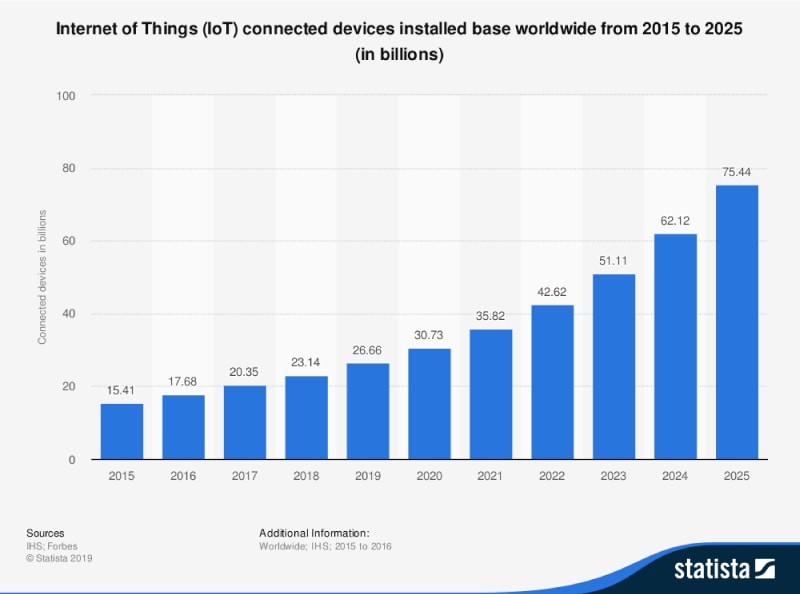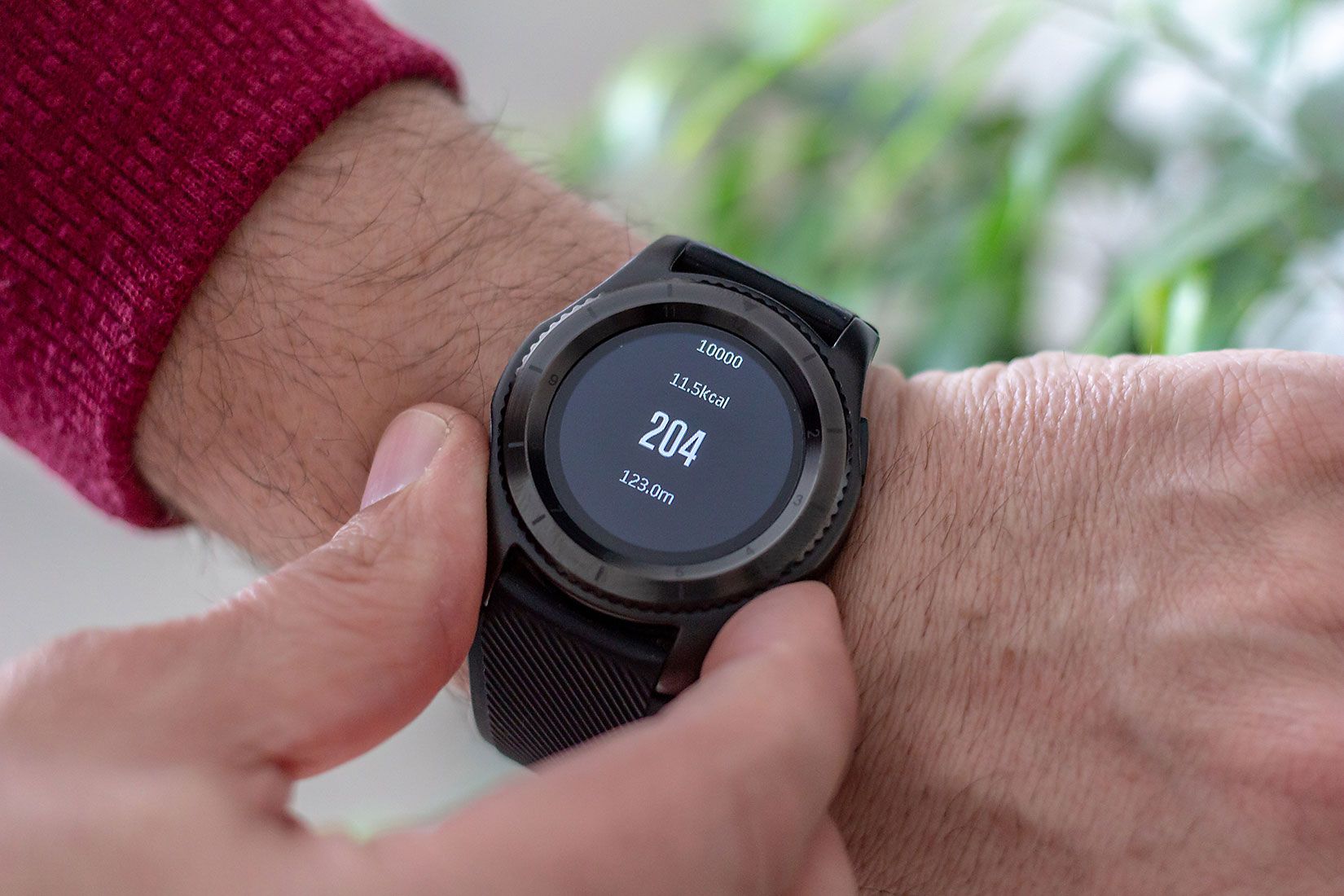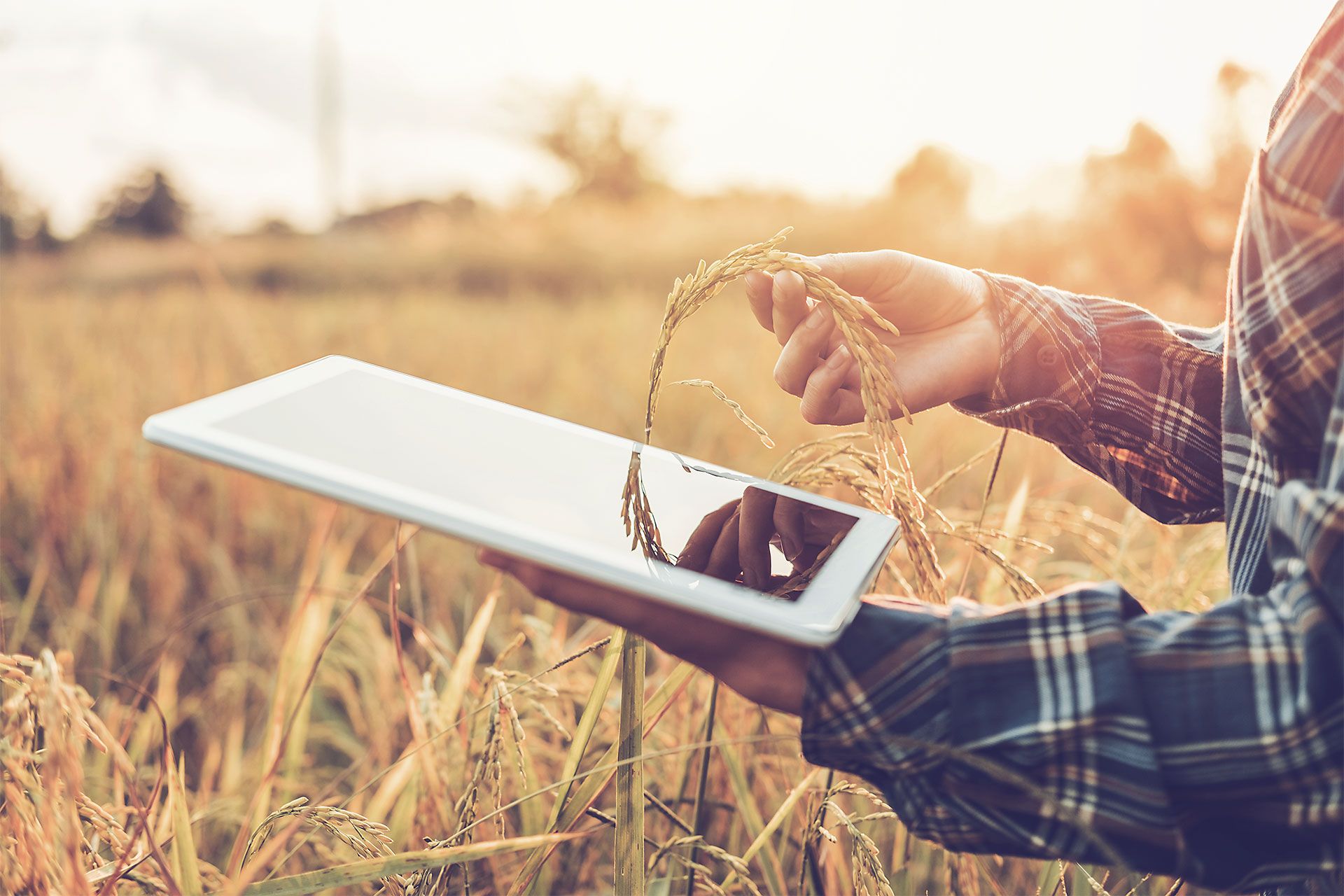IoT Explained - What the Internet of Things Really is


If you don’t live on a deserted island somewhere, à la Robinson Crusoe, chances are you have heard of the term “Internet of Things” (IoT). And you’ve probably read a handful of blog posts speaking about how the Internet of Things (IoT) is going to revolutionize trucking, fashion, healthcare and pretty much everything else. That’s all well and good but what exactly is the Internet of Things? What does this term really mean? If you’re like most of us, you probably know it’s got something to do with sensors, smart devices and wireless networks but could you explain what it means to a 5 year old? Being an IoT company, we thought we should end the confusion once and for all. So, here’s our simple, no-nonsense run-through on the Internet of Things.
We live in a world of smart devices. Today, it’s not just our phones that are smart- We now have “smart” versions of everything from toasters to lightbulbs. The Internet of Things is ushering us into a world of seamless connectivity where the boundaries between the digital and the physical world are practically non-existent.
A world where the internet is all around us, forming a neat and invisible overlay onto our physical world - this is already a reality today. All around us, we're starting to see a great number of everyday objects that are able to interface with the internet in real-time, offering a great many features to the end-user as a result. This, in effect is the Internet of Things at work.
What is IoT?
So, let’s start by defining the Internet of Things.
"Simply speaking, the Internet of Things is comprised of devices – from simple sensors to smartphones and wearables – connected together," says Matthew Evans, the IoT programme head at techUK.
A more standard, “technical” definition would be something along the lines of “the interconnection via the Internet of computing devices embedded in everyday objects, enabling them to send and receive data.”
“The Internet of Things is actually exactly what it sounds like - it means taking regular physical objects in the world and connecting them to the internet. It really is that simple.”
That’s just a very laboured way of saying something really simple - “The Internet of Things is actually exactly what it sounds like - it means taking regular physical objects in the world and connecting them to the internet. It really is that simple. Broadly speaking, these devices could be any object that is connected to the internet (but we generally don’t include traditional computing devices like smartphones or computers, when we use the term IoT). These devices collect and share data with one another, which can make them more intelligent and enable them to function more optimally.
Today, thanks to super-cheap chips and widespread wireless coverage, we are able to convert pretty much any “dumb” everyday object, be it a pill or even entire cities, into an IoT device. Adding sensors to these physical objects allows them to communicate on a real-time basis, without requiring any human intervention. This makes for a more responsive and connected world; They help us learn about and control our environments better. They help us harness the power of the network to run processes more smoothly and with lesser waste.
“The Internet of Things gives the opportunity for devices to communicate not only within close silos but across different networking types and so, helps create a much more connected world”
"It's about networks, it's about devices, and it's about data," explains Caroline Gorski, head of IoT, Digital Catapult. “The Internet of Things gives the opportunity for devices to communicate not only within close silos but across different networking types and so, helps create a much more connected world." These IoT devices could be anything - something small like a wireless temperature measurement device; or something as big as a driverless truck or an aircraft. The scope is endless for what an IoT device can be. Any everyday object that communicates with a network without human help, is an IoT device.
Why does IoT matter?
You are reading this on a device that is connected to the internet. Even if you are too young to personally remember a pre-internet world, you probably know how being connected to the internet makes your smartphone an exponentially more powerful piece of technology, than it’s “dumb” predecessors. A basic cellphone’s range of functionality (calling, texting etc) is dramatically expanded by connecting it to the internet. Now, in addition to calling and texting, you can literally read any book, listen to any song or research any given subject, right from the palm of your hand. So, it’s pretty intuitive to us that connecting something to the internet has some serious advantages.
When things have this ability to communicate, i.e transmit and receive information, it makes them smart and better at doing what they are designed to do. By harnessing the power of big data, every single device can shoot above its weight and be more efficient - This, in turn, makes the whole network operate more efficiently. Although in theory, this is true across the board, it is especially crucial within industrial applications. Deploying sensors on production lines can contribute to increased efficiency and clamp down on waste.
Types of IoT devices
An IoT device could perform one of the following functions:
1. It collects information and shares it
This includes sensors. Sensors can pick up information about temperature, motion, moisture, air quality, light, well you name it! Sensors allow us to understand environments better which helps us make better decisions.
For instance, modern jet-engines are chock full of sensors that collect and transmit data back to ensure that they are operating optimally. Here’s another example, closer to the ground - having access to information about soil moisture can enable farmers to know exactly when to water their plants. Moreover, they can use data to know just how much water their crops need, which is both economically and environmentally sensible.
In essence, sensors allow us to build more sophisticated models of our external environment. In turn, these data-rich models empower us to make better decisions in our everyday lives.
2. It receives information and acts on it
This may not seem very impressive on the face of it - I mean, isn’t that what a printer does? It receives information and acts on it, right? In principle, yes. But the applications and potential benefits are endless when you think about devices placed on extremely remote locations, where it’s not feasible to use manpower to perform operations.
3. It performs both these functions
IoT devices truly become game-changing tools when they can perform both these functions; i.e not only are they able to pick up vital information from the environment, but they are also then able to execute responses based on received information.
Let’s imagine the farming situation once again - what if the sensors, in addition to collecting data about the soil’s moisture content can also interface with the irrigation system, turning it on as needed, without actually requiring the farmer’s presence. Now that would translate to significant gains. In truth however, this is a very rudimentary example featuring a very basic setup. In practice, the sky's the limit for what can be learned by these systems, when a variety of sensors (light, air quality, temperature etc) are linked together. And here’s the cool part - when dozens or even hundreds of farms collect all this information, we can pool together this massive trove of data and use state-of-the-art algorithms to make even more rigorous predictions and identify patterns that could potentially have a significant impact on global food production.

History of IoT
In theory, the idea of incorporating sensors into basic objects is not all that new - it was discussed as far back as the 1980s. Kevin Ashton coined the term “Internet of Things”, all the way back in 1999! However, it would take the better part of a decade for the actual technology to match his prescient vision. The idea couldn’t really take off back then, save for a few early projects like this campus Coca-Cola machine at Carnegie Mellon University is a perfect example of the Internet of Things in action. The machine is equipped with sensors that track how many cans of Coke are being dispensed and how much money is being deposited. This data is then sent to the machine's servers, where it is analyzed and used to generate reports on the popularity of Coke on campus. Progress was glacial simply because the technology wasn’t ready at that time. Chips were large and unwieldy and internet technology was too nascent.
This crazy idea of a world full of interconnected things could only be possible in a world with dirt-cheap, low-power processors that were all but disposable. The advent of RFID tags and the growing availability of high-speed mobile internet allowed the Internet of Things to find its footing. In the past, incorporating RFID tags was a very expensive proposition and was limited to expensive pieces of equipment. However, the cost of adding sensors and internet connectivity to things has continually plummeted, with some experts venturing that the cost might one day come down to a ridiculous 10 cents, making it possible to connect practically every single object to the internet!
Another important landmark in the history of IoT was the adoption of IPv6, which is the latest version of the Internet Protocol (IP) and provides devices on networks with unique identification and location systems. This was a crucial step that allowed the Internet of Things to scale. American tech-firm Cisco Systems estimates that it wasn’t until 2008-2009 that the IoT-proper was born. According to them, this was the time when the number of connected devices exceeded the number of people on the planet.

As you see - the IoT has been around for a while, but it really started to take off in the early 2010s. This was largely due to the release of the iPhone 4S, which came with an A5 chip that had built-in support for wireless connectivity. This allowed devices like the Fitbit and the Nest thermostat to connect to the internet without the need for a separate wireless adapter.
The Internet of Things has continued to grow in popularity over the years, and there are now millions of devices that are connected to the internet.
How big is the Internet of Things?
The Internet of Things is huge! And it’s growing. There are already more connected IoT devices than there are people. Despite falling well short of wild predictions from just a few years ago, the number of IoT devices worldwide has grown fivefold in the last ten years. Current projections estimate 75.4 Billion connected IoT devices by 2025.

Applications of The Internet of Things
There are a variety of different applications for the Internet of Things. Let's dive into some of the most popular applications.
Wearable devices
Wearable devices are one of the most popular applications for the IoT. wearable devices are devices that are worn on the body, and they can be used to track things like your heart rate, steps taken, and calories burned.

Smart Homes
A smart home is a home that is equipped with devices that can be controlled remotely, and these devices can be used to do things like turn on the lights, adjust the temperature, and lock the doors, close the skylights if it's raining -things that make your life easier.
Home automation
Home automation is one of the most popular applications for the Internet of Things. With home automation, you can control various devices in your home from a single app or interface. This can include things like lights, locks, thermostats, and even appliances.
Asset tracking
Asset tracking is the process of tracking the location and movement of valuable assets. This can include things like expensive equipment, vehicles, or even people. Asset tracking can be used for a variety of purposes, such as theft prevention, security, and inventory management.
Smart cities
A smart city is a city that is equipped with sensors and other technology to collect data about the city and its citizens. This data can be used to improve the efficiency of city services, reduce traffic congestion, and even improve air quality.
Retail
Retailers are using sensors and other technologies to track things like inventory levels and customer traffic. This information can help retailers improve their operations and provide a better customer experience.

Agriculture
Farmers are using sensors and other technologies to collect data about everything from crop health to soil moisture levels. This data can help farmers make better decisions about how to grow their crops.
Manufacturing
Manufacturers are using sensors and other technologies to track things like machine performance and energy usage. This information can help manufacturers improve their operations and become more efficient.
Transportation
Transportation companies are using sensors and other technologies to track things like traffic congestion and vehicle location. This information can help transportation companies improve their operations and provide a better customer experience.
The list of applications for the IoT is endless, and the possibilities are endless. As the Internet of Things continues to evolve, new applications and use cases will continue to emerge.
Common IoT acronyms
When you’re first starting out in the world of IoT, it can be difficult to understand all of the acronyms. Here are some of the most common ones that you’ll encounter.
IoT - Internet of Things
This is a term used to describe the growing trend of everyday objects being connected to the internet. In the simplest terms, the internet of things is the connection of physical objects to the internet.
IIoT - Industrial Internet of Things
Same as IoT but with a focus on Industrial.
MIoT - Medical Internet of Things
Same as IoT but with a focus on Medical & health.
IoE- Internet of Everything
A term that Cisco Systems coined in 2012, which refers to the network of devices, people, and processes that are connected to the internet. The devices can be anything from a car to a heart monitor.
EIoT - Enterprise Internet of Things
Same as IoT but with an emphasis on Enterprises.
HVAC - Heating Ventilation and Air Conditioning
It is a system used to regulate the temperature and humidity in a building.
MWSN - Mobile Wireless Sensor Network
MWSN stands for Mobile Wireless Sensor Network. It is a network of sensors that can communicate with each other without needing to be connected to the internet.
WSN - Wireless Sensor Network
The abbreviation stands for Wireless Sensor Network. It is a network of sensors that can communicate with each other without needing to be connected to the internet.
AWS - Amazon Web Services
AWS is a cloud computing platform offered by Amazon. It provides developers with access to a wide range of services, including computing power, storage, databases, and more. AWS has been a major player in the cloud computing market since its inception in 2006.
MEMS -Micro Electro Mechanical Systems
Sensors that can be used to detect a variety of different stimuli, such as temperature, pressure, light, and sound.
RFID - Radio Frequency Identification
Radio Frequency Identification (RFID) is a technology that uses radio waves to identify and track tags attached to objects. The tags contain electronically stored information.
M2M - Machine to Machine
Machine-to-machine communication (M2M) is a term used to describe the communication between two machines. It can be as simple as a vending machine sending a signal to a central computer when it has run out of stock or as complex as autonomous vehicles communicating with each other to avoid collisions.
IP - Internet Protocol
An Internet Protocol (IP) address is a unique number that is assigned to every device connected to the internet.
LAN - Local Area Network
A LAN (Local Area Network) is a computer network that connects devices in a limited area. A LAN can be used to share files, printers,and other devices. A LAN can also be used to connect to the Internet.
2FA - 2 Factor Authentication
2fa is the process of securing online accounts on a website. It involves not only an account password but another form of authentication, such as entering a unique code that is texted to your phone.
NFC - Near Field Communication
A technology that allows two electronic devices to communicate with each other by bringing them within close proximity, usually no more than a few inches. NFC is often used for making payments with contactless debit and credit cards or for sharing files between devices.
BLE - Bluetooth Low Energy
A specification for Bluetooth that uses less energy than traditional Bluetooth. It allows devices to communicate with each other without needing to be connected to the internet.
MCU - Microcontroller
A microcontroller is a small computer on a single chip that can be used to control devices such as lights, motors, and other electronic equipment. It usually contains a CPU, ROM, RAM, and other support circuitry.
RTOS - Real-Time Operating System
A real-time operating system (RTOS) is a type of operating system that guarantees a certain level of response to stimuli. Such systems are critical for devices that need to interact with the real world in a timely manner, such as autonomous vehicles or industrial robots.
VPN - Virtual Private Network
A VPN, or virtual private network, is a secure tunnel between two or more devices. It can be used to bypass firewalls and connect to private networks.
Challenges and concerns
It is a well-known fact that the Internet of Things is still in its infancy. One of the biggest challenges has been that IoT devices are often not able to connect to and communicate with each other. Security is another major concern. Data from IoT devices, just like any other data, is vulnerable to attack - For instance, in 2016, a Chinese IoT company had to recall 4.3 million units of their camera after a giant botnet attack that took several major websites and services offline.
Another massive challenge that faces the future of IoT is the battery problem. Essentially, it makes very little economic or ecological sense to power the rapidly growing number of IoT devices with batteries, no matter how energy-efficient they are. It makes no sense to deploy an IoT sensor in an extremely remote location only to have to transport personnel there to replace its battery. Plus, with the numbers that we’re dealing with, such a solution would just physically not be possible. However, newly emerging technologies like RF-energy harvesting promise a way around this battery bottleneck.
There are also concerns in some quarters about the potentially seedy implications of a hyper-connected world. There are fears that it might pave the way for unfettered surveillance and manipulation by governments and corporations. There have also been concerns about sensitive data falling into nefarious hands and being misused by parties interested in furthering their own agendas. Amidst these privacy concerns, it has been increasingly clear that IoT stakeholders need to make security a top priority.
The only future for IoT is batteryless sensors
As the internet of things continues to grow in popularity, the need for sensors that can run without a battery will become increasingly important. This is because as more and more devices are connected to the internet, the number of sensors needed to collect data will also increase. And while it’s possible to power sensors with a battery, this solution is not always practical or feasible. One way to overcome this challenge is to use energy harvesting technology. This technology can be used to convert energy from a variety of sources, including light, heat, radio waves, and motion, into electrical energy that can be used to power sensors. This makes it possible to create batteryless sensors that can run indefinitely without needing to be replaced or recharged.
The benefits of batteryless sensors include:
Reduced environmental impact – One of the biggest problems with traditional batteries is that they contain harmful chemicals that can damage the environment. By using batteryless sensors, you can reduce the amount of toxic waste produced by IoT devices. Moreover, Cobalt, which is an essential ingredient in battery production is mostly mined in ethically dubious circumstances in the African nation of DRC. Going batteryless circumvents the need to rely on these blood batteries.
Increased reliability – Battery-powered sensors can sometimes fail due to a low battery or improper storage. By using energy harvesting, you can eliminate this problem and increase the reliability of your sensor network.
Reduced costs – The cost of batteries can add up over time, especially if your sensors are constantly powered on. Replacing batteries can also be a hassle. By using energy harvesting, you can eliminate the need for batteries and reduce your total cost of ownership.
What does all this mean to a consumer?
As a consumer, there is a lot to be excited about. The Internet of Things promises to make our living spaces more interactive and intelligent. As such, smart speakers like Amazon’s Echo or Google Home have become indispensable parts of modern homes across the globe. Smart devices offer us more convenience, security, and information.
It is entirely reasonable to imagine that in the near future, IoT devices will start to feature more and more prominently in our lives. Be it through smart homes reminiscent of Iron Man’s Jarvis or entire “smart-cities” teeming with sensors, the age of IoT is well and truly here. However, far from just pampering us with even more frivolous tech-thrills and hedonistic convenience, IoT holds promise in some very key areas. For example, IoT devices could help us study our natural environment in more depth and allow us to understand (and possibly, mitigate) pollution. Smart cities could change the way we interact with urban spaces. IoT devices could bring dramatic changes to the way we care for our health.
As mentioned earlier, the scope is nearly endless when it comes to IoT and the number of ways it is going to have a massive impact on our lives, in the near future.
IoT in 2023 (An Update)
Looking back from 2023, a lot has changed in the world of IoT. One thing remains constant though and that is the massive growth, both in terms of investment and innovation, in the connected tech space.
Today, batteryless IoT powered by energy harvesting is no longer a niche power solution. Far from it. Today, energy harvesting based solutions are considered the gold-standard especially for ultra-low-power IoT devices.
In the years since we first published this post, we have made quite a few leaps ourselves, as a company - we launched ONiO.zero, our very own batteryless microcontroller which is like no other in the world. Able to harvest both RF energy and solar, it requires no batteries whatsoever.
In 2023, we went a step further and launched our first turnkey product featuring ONiO.Zero - Our batteryless ESL. Typical shelf labels use about two coin cells each and there can be tens of thousands of these ESLs in large stores. By offering a viable batteryless option, we thought we could potentially save millions of coin cells from ending up in landfills and oceans.
The world of IoT, at large, is heading in a similar direction. In this current climate of uncertainty around environemntal issues such as global warming, deforestation, soil desertification etc, companies understand very well that the future for IoT technology is in embracing energy harvesting technology.
Exciting times lie ahead for this space as more and more investment pours in from some of the biggest players in the world. The advent of 5G has catalysed the launch of some pretty audacious solutions as we head into a world that's going to be interconnected like it never was before!











